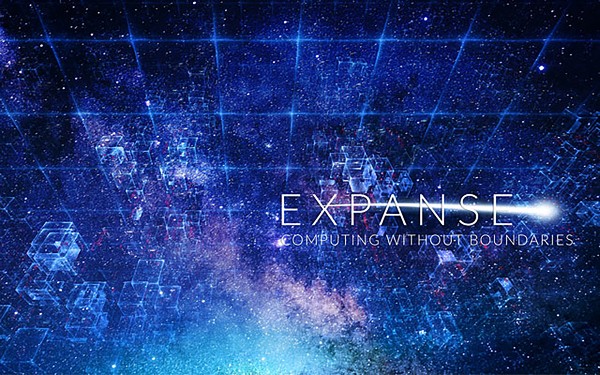The San Diego Supercomputer Center (SDSC) is preparing to roll out a 5-petaFLOPS system with Dell PowerEdge servers with 2nd Gen AMD EPYC processors and NVIDIA V100 Tensor Core GPUs inside, connected with Mellanox HDR InfiniBand.
In years past, supercomputers were built to meet the needs of elite teams of scientists and engineers whose work required extreme processing power. Today, the world of supercomputing is changing, as an ever-broader range of users require access to high performance computing to drive discovery and innovation. In this new data era, HPC systems often need to meet the diverse requirements of thousands of users.
With support from the U.S. National Science Foundation, the San Diego Supercomputer Center (SDSC) supports the HPC needs of tens of thousands of users and hundreds of multidisciplinary programs, spanning from astrophysics and bioinformatics to environmental sciences and health. SDSC provides resources, services and expertise to the national research community, including academia, industry and government.
To carry out its far-reaching mission, SDSC strives to accelerate discovery and innovation with the latest and greatest technology, and this year is no exception. Sometime this summer, SDSC will roll out the Expanse system, expected to serve more than 50,000 academic- and industry-based researchers from across the United States. The system, delivered by Dell Technologies, will have the versatility and balance to give users just what they need, including PowerEdge C4140 servers with NVIDIA V100 Tensor Core GPUs and NVIDIA NVLink high-speed interconnect technology.
A look under the hood
 Expanse will deliver the power of 728 dual-socket Dell PowerEdge C6525 servers with 2nd Gen AMD EPYC processors connected with Mellanox HDR InfiniBand. The system will have 93,000 compute cores and is projected to have a peak speed of 5 petaflops. That will almost double the performance of SDSC’s current Comet supercomputer, also from Dell Technologies.
Expanse will deliver the power of 728 dual-socket Dell PowerEdge C6525 servers with 2nd Gen AMD EPYC processors connected with Mellanox HDR InfiniBand. The system will have 93,000 compute cores and is projected to have a peak speed of 5 petaflops. That will almost double the performance of SDSC’s current Comet supercomputer, also from Dell Technologies.
In a unique design approach, Expanse will be based on clusters of 13 identical scalable compute units, each with 56 CPU compute nodes and four GPU compute nodes. Each of these scalable compute units will have more than 7,000 compute cores and 56 terabytes of lightning-fast local NVMe storage. And beyond the scalable units, Expanse will have a Lustre parallel file system with 12 petabytes of storage, attached via an HDR 200 network.
For many users, NVIDIA V100 Tensor Core GPUs will be a big attraction for the Expanse system, as is the case with the SDSC’s current Comet supercomputer. SDSC says that Expanse’s accelerated compute nodes will provide a much-needed GPU capability to its user community, serving both well-established applications in areas such as molecular dynamics as well as the rapidly growing demand for resources to support machine learning and artificial intelligence.
The ‘long tail of science’
Like SDSC’s Comet supercomputer, which is slated to remain in operation through March 2021, Expanse will continue to serve what is referred to as the “long tail of science.” Expanse will run workloads from virtually every discipline, from multi-messenger astronomy, genomics and the social sciences to biological sciences, earth sciences, material science, quantum chemistry and astrophysics.
These workloads include high-throughput computing, batch-scheduled jobs and science gateways. Expanse will also support direct integration with commercial cloud, which will allow users to access cloud HPC resources via Expanse, and composable systems, which is an approach that integrates HPC systems, instruments, data analysis and high-performance networks into purpose-specific resources.
In short, we’re talking about a highly accessible HPC system that will serve researchers across virtually all the domains of science, engineering, music and art.
To learn more
For a closer look at Expanse, see the SDSC news release “NSF Awards $10 Million to SDSC to Deploy ‘Expanse’ Supercomputer.” And stay tuned for more updates from Dell Technologies as we work with SDSC to bring the system online this summer.
